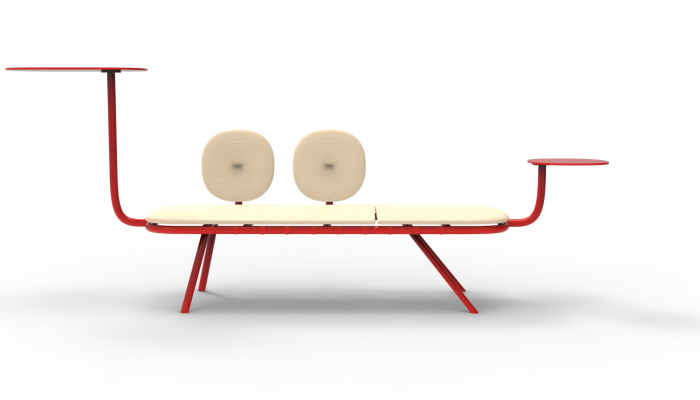
Modes
Work and life balance becomes increasingly important when working from home is becoming a normality for many. Modes helps the user get into “working mode” and shift to “free time mode” by visually putting away work at the end of the day.

Work and life balance becomes increasingly important when working from home is becoming a normality for many. Modes helps the user get into “working mode” and shift to “free time mode” by visually putting away work at the end of the day.

Inspired by the current lock down situation due to COVID-19, Bobbedebed addresses kids’ need for physical activity inside small space home environments. Bobbedebed is a trampoline that also functions as a bed not to occupy additional space.

Post-colonialism, neo-liberal market capitalism and union prohibitions are more of a rule than an exception and the underprivileged are being exploited. Putting control over equipment back into the hands of its wielders has become a huge part of the implementation program.

Electric surfboards are expensive toys. They are seeked for their ability to provide unmatched fun in water. Ranger is an electric surfboard redesigned for thrill and comfort. Designed in collaboration with Radinn, a market leader...

Urban Animal is a seating concept that embraces playfulness, a seating concept that is meant to stand out in the space it occupies.

Vision and hearing are two dominant senses, and when having a combined impairment of both vision and hearing, the reliability and use of our touch increases.Sentio was designed for the sense of touch, making it possible for the sensory impaired to enjoy music with the help of vibrations.

Altitudes aims to answer to both the human and environmental needs thanks to a system focused on versatility and interchangeable parts, which makes it a sustainable solution. The main element of the structure can be configured in many different variants. Those can be used individually or together, on different heights, in different lengths and facing various directions.

Horseplay is a project with playfulness in adults as a focal point. Playing is a big part of childhood; it helps us to develop and teaches us how to become adults. Therefore we often see play as an activity that differentiates us from children, but it could also be seen as an activity that makes us alike. Adults tend to play games that are considered more sophisticated and complex consisting of rules and framing difficult to understand for children. However, these games can also be seen as an intricate version and development of games that we played when being young. In this project play and playfulness in adults have been investigated in order to find a way to inspire to the activity and emotion that have a positive impact on us. The experience of playfulness can reduce stress and make us feel happier. The finished result is not only a playful object, but also a norm-breaking product of how adults play. This, in hope to help us find our inner child.

“Is this honestly waste?” Yes it is! The waste from Swedese’s own production in Vaggeryd, their suppliers Steelnova and Anderssons Mekaniska has been transformed into a series of products that are designed for the home and office.

This project seeks to inspire people and industries to replace plastics by redefining useful everyday objects under a theme of ‘keeping your house clean’.